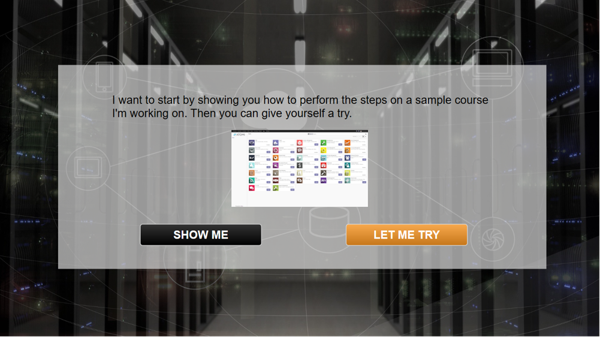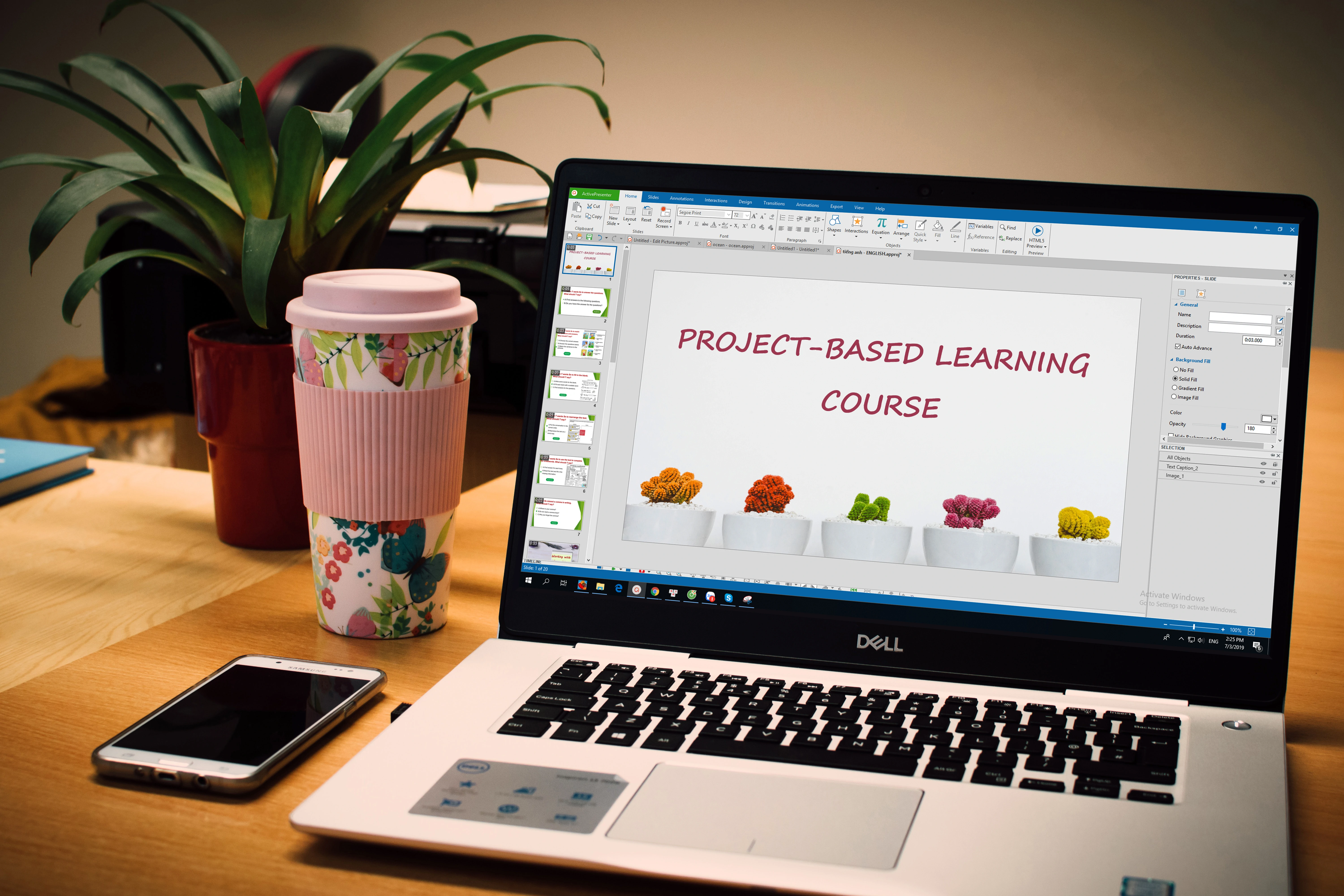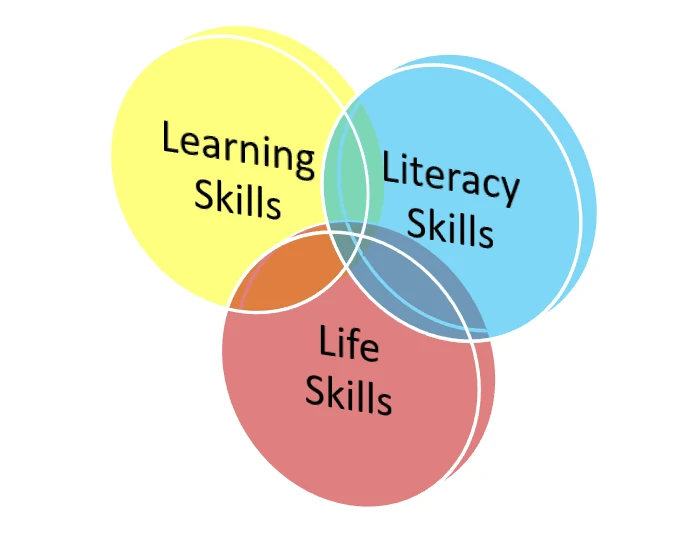“Knowledge is a consequence of experience” – the profound words of Jean Piaget ring truer than ever in today’s rapidly evolving world. There’s an undeniable power in “learning by doing,” a direct pathway to absorbing humanity’s achievements.
Think about it: our daily lives are a constant stream of real-world challenges, and the ability to solve these issues fuels progress. So, if our goal is to truly equip learners for success in life, shouldn’t we immerse them in a learning environment that mirrors this project-driven reality? That’s precisely where the Project-Based Learning (PBL) trend steps into the spotlight, forging a vital connection between the classroom and the real world.
And guess what? While numerous tools aim to support modern education, ActivePresenter an eLearning authoring software stands out as a particularly well-suited tool for bringing Project-Based Learning to life. ActivePresenter enables the creation of realistic learning scenarios grounded in real-world case studies, fostering deeper engagement and practical skill development.
Want to discover why PBL is not just a trend but a fundamental shift in education? Keep reading to explore its core principles and compelling benefits.

The Definition of Project-Based Learning
In general, Project-Based Learning or Problem-Based Learning (PBL) is a learner-centered teaching method. It gives learners the opportunity to expand their knowledge base and develop skills through doing the project to solve the problems they may face in reality. These projects are usually too large and complex for one learner to work on alone. Thus, PBL tends to encourage teamwork. Learners have to work in pairs or in groups, conduct research, analyze information, and draw their own conclusions. As a result, they develop deep content knowledge as well as multi-skills in this modern world.

As we can see, PBL changed traditional teaching, passive learning, and rote memorization. This approach motivates learners to participate actively in the learning process. It is better rather than just cramming the information to pass the final test. Plus, PBL is not a bad choice to make your eLearning more interactive and empower your learners.
The Advantages of Project-Based Learning
In fact, PBL is more than just doing projects. The project is the vehicle for conveying the important knowledge and skills learners need to learn. In other words, a teacher plays the role of a facilitator to instruct and monitor learners in the online classroom. And learners become active digital researchers or assessors of their own learning from the project-making processes.
So, what benefits does the PBL trend have to make it become a new range in education? Keep reading to find out about them.
1. Connecting Learners to the Real-life Context
In the land of education, putting knowledge into practice is one of the most important tasks of any learner. Clearly, reading documents or books is always easier than practicing. For example, it is easy as pie to read books or articles about living positively instead of actually practicing positive thinking all of the time. Now, in the PBL trend, learners have to face real-world situations simulated in the forms of the projects. To find the problem’s solution, learners need to ask the right questions. Then, finding the relevant information, conducting the survey about the actual situation, and analyzing the data.

For example, we have the project’s topic Protect the Environment with the driving question: How to reduce using plastic bags? It means that learners have to conduct a survey about the way their local residents use plastic bags, their harmful effects, and how to cut down on using them. That way, learners are connected to their real life, not just bookworms. As a result, learners absorb knowledge while doing and keep positive attitudes toward education. Firstly, they will work individually to get the data. Next, learners can work together in an online environment to share information, discuss and complete the project. This environment provides additional flexibility in time and space. These two highly-valued resources are often limited in the face-to-face classroom.
2. Developing 21st Century Skills
Preparing learners for the world is not an easy task for any educator. There is no learner in the history of education like today’s modern learner. As today’s fast-paced world quickly develops, it has become increasingly proof that children must develop a set of skills they may be demanded in college and work. These skills are called 21st Century Skills and can be acquired via PBL.

When doing a project, learners have the opportunity to think outside the box. Simultaneously, working with others, achieving an agreement, learning how to effectively convey ideas among different personality types, and more. Plus, to solve the problem, learners have to understand the facts, analyze the statistics and summarize collected data. To do well, learners have to use the computer competently. In other words, the PBL trend helps learners develop skills for living in a knowledge-based, highly technological society. As a result, learners can solve every eLearning course task in the future with ease. What’s more, learners become wiser and adapt to the world more effectively.
3. Raising Learners’ Voice and Choice
Raising learners’ voices and choices is a significant benefit of the PBL trend. Undoubtedly, all of us have Self-actualization Needs, according to Abraham Maslow. That explains why people always desire to express their opinion to others. If learners aren’t able to use their judgment when solving a problem and answering a driving question, the project just feels like doing an exercise. In PBL courses, learners can control many aspects of the project, from the questions they make, the time they manage, the resources they will use to find answers to their questions, to the tasks and roles they will take on as team members, the product they will create.

For example, if learners are interested in environmental problems, they can select the theme of the project such as protecting water resources, protecting wildlife being extinct, or reducing air pollution. The online environment proves another strong point in that it allows the possibility of producing public results, such as a video, a presentation, a game, or even an article. This way, learners’ work will be seen by many others more than they are in the traditional classroom.
4. Evaluating Learners’ Outcomes More Accurate
As said earlier, learners have to use many skills to do a project. Thus, facilitators can assess learners’ capabilities to observe, compile, analyze and summarize the data. In other words, facilitators have a greater chance to evaluate learners than essays or exams in the traditional classroom. The result of online classrooms will become more meaningful when it is done for learners selves, not only for the teacher or the test.

“We do not learn from experience. We learn from reflecting on experience” (John Dewey). Throughout a PBL online course, it can reflect on what learners have learned, how they’ve learned, and why they’ve learned. Plus, facilitators can give informative feedback for each learners’ project to help them do better in the future.
Final word
On the whole, the main advantages mentioned above provide a good case for the implementation of the Project-Based Learning trend. That’s why the Project-Based Learning trend is a powerful teaching method and becomes widely used in both real and virtual classes. Are you ready to take part in any PBL online course? Effective PBL in the online classroom relies on teachers’ ability to design high-quality online content. Remember that you always have an ActivePresenter companion with you.
Download ActivePresenter today and start designing your own impactful project-based learning experiences (free & no time limited for trial use)

Related Articles: